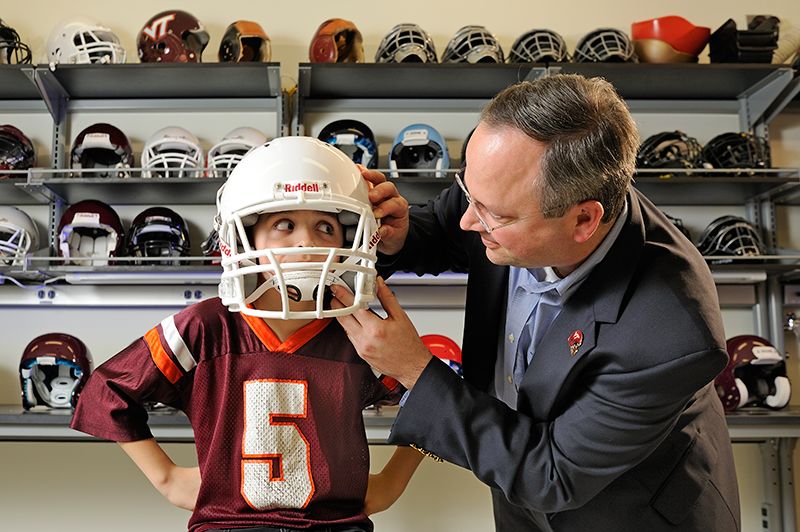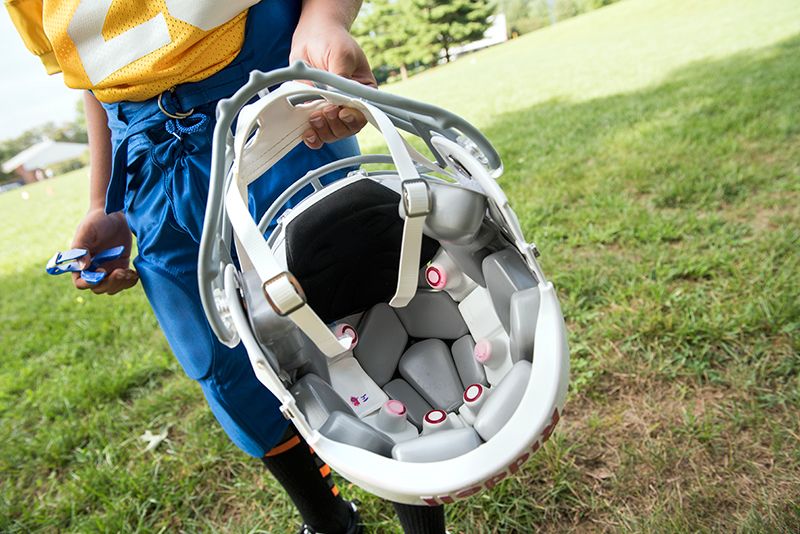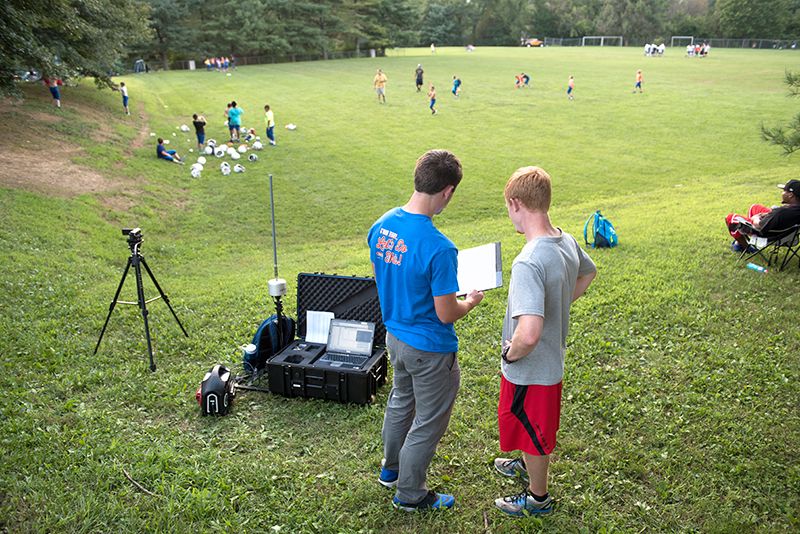How Much Should Youth Football Change to Reduce Concussions?
Drop kickoff returns? Cut the number of players? Shrink the field?
/https://tf-cmsv2-smithsonianmag-media.s3.amazonaws.com/filer/58/23/5823880d-31d2-47b4-9dca-75699378224f/vt_helmet_practice.jpg)
At some point during Sunday’s Super Bowl, the helmets of two players will come crashing together. Actually, this will happen numerous times, but only a few incidents will get much attention, because of their timing or particular level of nastiness. Perhaps the referees will call a penalty, perhaps not, but the jarring contact will undoubtedly be played over and over, in slow motion, on the big screens at the stadium and on millions of smaller ones in homes and bars around the world.
The moment will pass. But it will reflect one of the National Football League’s (NFL) greatest assets—the adrenaline rush of legal violence—and what is becoming its greatest threat—the long-term damage it can cause.
For years, the NFL disputed any direct link between playing football and traumatic brain injuries. But last year, for the first time, a league official acknowledged a connection. And the evidence keeps building. A study released a month later concluded that more than 40 percent of retired NFL players showed signs of abnormal brain structures and half of those who took a series of cognitive tests exhibited problems with reasoning, planning and paying attention.
Those kind of findings are having a ripple effect. The number of boys between ages 6 and 12 participating in organized tackle football programs dropped about 18 percent between 2009 and 2014, according to data from the Sports and Fitness Industry Association. It did tick up slightly in 2015 to 1.23 million, but during that year, almost as many young boys played flag football, a much less violent version of the game.
The trend has prompted the NFL to get much more serious about making youth football safer. This week the New York Times revealed that U.S.A. Football, an organization that oversees amateur football and is heavily supported by the NFL, is slowly unveiling a very different type of game—one designed to reduce the amount of head-knocking and high-speed collisions.
“Modified tackle”
For starters, the new version of the sport, called modified tackle, would cut the number of players on a side from 11 to between six and nine, and shrink the size of the field from 100 yards to 40 yards long. In theory, that could decrease the intensity of body crashes and damaging tackles. So would another change—the elimination of punt and kickoff returns and the open-field hits that are so much a part of them.
There’s more. Players at the line of scrimmage would be required to stand upright instead of getting down into the traditional three-point stance. Plus, coaches will need to rotate their players into different positions instead of staying in just one, and also make sure that kids matched up against each other are roughly equal size.
It’s still too early to say how effective these adjustments will be. Scrimmages following the new rules only occurred on a trial basis in a handful of league’s last fall. A full rollout of modified tackle isn’t expected to happen for at least a few years, depending on the results and reaction to expanded trials this year.
“What I would encourage is to collect data, and really quantify the change,” says Stefan Duma, head of the department of biomedical engineering and mechanics at Virginia Tech. “Use sensors, use video so you can say this made things better, and this didn’t.”
Dumping drills
Duma speaks from experience. With the help of a $3.3 million National Institutes of Health grant, he is leading a five-year study of the exposure of youth football players to head injuries. Since the fall of 2015, his research team at Virginia Tech, along with others at Wake Forest and Brown University, have each been closely tracking two youth football teams.
Players are outfitted with sensors, one inside their helmets and another in the front of their mouthpieces, and each measures all head impacts and rotations during practices and games. The data is transmitted instantly to researchers near the sidelines. At the same time, all practices and games are videotaped with the purpose of matching sensor data with what actually happens on the field. Players also undergo a series of tests to measure their cognitive skills and posture stability.
It's only two seasons into the study, but Duma says they’ve been able to gather meaningful data, particularly when it comes to how teams practice. Not only does reducing practice time lower head injury risk, but the researchers also found that certain drills increase it. One tackling drill, known as “King of the Circle”—in which a player with the ball rushes at defenders surrounding him—had the highest rate of head impacts. Since it doesn’t much resemble anything that happens during a game, “King of the Circle” was jettisoned.
Because they are following the same players as they age, the scientists have also started to make some observations about how injury risks change as players get older. “We are getting more data on how things change with age,” Duma says. “So how do things with a seven or eight-year-old player look like as opposed to an 11 or 12-year-old? How does the game change? How does the head impact exposure change.”
Beware of too many changes
Duma says he likes the part of the modified tackle model that would eliminate kickoff and punt returns because data supports it. So far, however, there’s not the same level of evidence that reducing the number of players or the size of the field will make a big difference.
“The concern,” he says, “is if you change the game too dramatically, teams may just decide to pull out of U.S.A. Football, and then there’s no oversight. You want to try to keep teams in the organization.”
Duma also feels that when we think about head injuries in kids’ sports, we tend to focus too much on football. “People forget that football is only a small part of head injuries in children. If you think taking a kid out of football is going to reduce his head injuries, then you should get rid of his bicycle, too. That’s actually where the real risk comes in.
“I tell people that it really is a decision about playing team sports. If you’re not going to play football, are you not going to play hockey, are you not going to play soccer? To me, the discussion is whether you’re going to play sports, and if you are, how do you try to make it as safe as possible?”
/https://tf-cmsv2-smithsonianmag-media.s3.amazonaws.com/accounts/headshot/randy-rieland-240.png)



/https://tf-cmsv2-smithsonianmag-media.s3.amazonaws.com/accounts/headshot/randy-rieland-240.png)